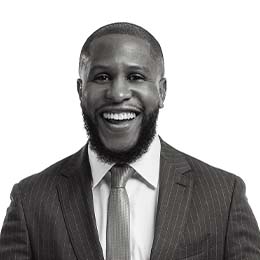The One Thing Sales Leads Can Do to Succeed (It’s Not What You Think)

Originally published in Forbes
Sales leaders spend a lot of time reviewing forecasts and monitoring the progress of sales opportunities through the pipeline. They generally don’t spend a lot of time coaching salespeople to improve the experience they provide to clients and prospects.
When you think about it, this is an obvious gap.
First of all, leaders who set their priorities the other way around will move themselves from a reactive mode (tracking performance in hindsight) to a proactive mode (improving the chances of a successful client interaction in advance). They’ll also make good on their primary responsibility to enable the success of their team.
Also, the customer buying experience itself is incredibly important in B2B sales. According to Gartner, the biggest impact on whether or not a buyer will follow through with a purchase is delivering a great experience to prospects.
This brings me to the main message of this post.
If there’s one thing sales leaders can do, above all else, to improve team performance, it’s this: Create a culture of coaching.
Notice I say a “culture” of coaching. This means that the sales leader doesn’t do all the coaching. The sales leader is one person, so that’s not scalable. The idea of a culture of coaching is deeper than training from the manager. It’s also simpler to implement than you might think.
The Wrong Answer
Whenever I’m at an event, I ask: “Whose job is it to coach the sales team to greater levels of performance? To, for instance, improve preparation for client meetings?” Without fail, all the hands go up in support of the answer that “It’s the sales manager’s job.” I often reply: “BUZZZ! Nope! Thanks for playing.”
Sales leaders simply can’t be available to provide the just-in-time coaching that’s needed to improve client interaction.
The trap that well-meaning sales leaders fall into is that coaching requires that we get out our calendars, set aside an extended period of time—like, an hour—so that we can sit together to come up with a strategy and tactics for an upcoming client call. But really, for most meetings, this coaching can happen in ten minutes, with pretty much anyone on the team.
The Right Answer
The answer, then, is to create a culture of coaching. Consider a team that comprises eight or 10 salespeople and one leader. That team doesn’t have one coach; it has eight or 10 potential coaches. And coaching can happen whether or not the sales leader is present.
To advance from “the leader is the coach” to “everyone is a coach” does require a little structure change. And it may need to begin with a mandate.
Here’s how the mandate might play out: The sales leader tells each person on the team: “Before you speak to a client, I expect you to run your thinking by and plan for that meeting with one of the other team members to get some feedback. This is a non-negotiable, and I’ll be following up to see how it’s going.”
Say it more than once —and then follow up. Providing structure is critical. Ask them about how their call planning is going. Make it part of the team’s ritual and culture.
Discover how Helping Clients Succeed®: Strikingly Different Selling can improve customer relationships while delivering predictable sales results for your organization.
The Most Trusted Leadership Company
Learn how your organization can use our people, content, and technology to create collective action and meaningful change.

Roadblocks and Invisible Fences
Here’s one barrier I see all the time. I’ll ask a salesperson, “Do you know how to work with others to do call planning?” The salesperson replies, “Of course.” The thing is, there is actually a massive knowing-doing gap in this exchange. Of course, the salesperson knows how to get feedback (and how to access other coaching tools)—but they don’t actually do any of it. And these are often the salespeople that clearly need the coaching more than anyone else!
These are also the too-cool-for-school salespeople—the ones who project an air of “I don’t need to do that.” It doesn’t seem to be related to their experience or lack thereof. It’s a blind spot, or casual bravado, or maybe just plain pride. It leads to an inflated estimation of their own capabilities. Perhaps it’s a cognitive bias, like the Dunning-Kruger effect.
Whatever the reason, it’s essential to press through this silent resistance with structure and follow –through. Because, unfortunately, the people with the biggest capability gap are likely to estimate their capability the highest. It’s a tremendous barrier to growth. The minute you start thinking you don’t need help, that’s exactly when you need it the most.
There is another fallacy that can be a block. The belief that the coach must be “better” at selling than the rest of the team or have some specific expertise the rest of the team lacks in order to provide coaching. All it takes is a look at professional sports to counter that. There isn’t one coach in sports who can outplay the player. What the coach can offer is a bit of structure to help the player help themselves.
Learn more about other roadblocks to sales success when you download our free tool, 8 Techniques to Get Beyond the Gatekeeper.
Putting the “Team” Back in Sales Team
One more thought: We use the phrase “sales teams,” but most salespeople do not really operate as a team. They are often left to their own devices and often compete with one another. It’s more like being a professional golfer than it is like being on a basketball team.
That’s another reason why you need to establish a structure. To remind the players that they are part of a team, and that mutual coaching is simply part of the ritual and expectation of the team. Leaders can help each team member to develop the habit of seeking and giving coaching.
And the good news is, sales coaching works! When I bounce ideas off another salesperson before jumping into a client interaction, 95% of the time, I improve as a result of that preparation. Once the effort is made, good outcomes are the reward—superior individual performances that collectively add up to a winning record for the team.
Ready to unleash superior sales results for your team? Download our free guide: 3 Ways Your Team Can Stand Out, Sell More, and Thrive in 2025.








